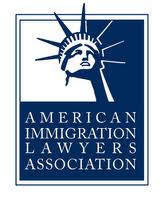Starting in October 2022 the Visa Bulletin will retrogress many available visa dates which may lead to many with a pending Adjustment of Status to remain stuck with their Adjustment of Status pending for longer than anticipated. Perhaps years more for India in particular.
With that in mind, in 2000, Congress enacted the American Competitiveness in the Twenty-First Century Act of 2000 (AC21) which, in part, added INA 204(j). This provision allows certain employment-based adjustment of status applicants experiencing delays in the employment-based adjustment of status process some flexibility to change jobs or employers while their Application to Register Permanent Residence or Adjust Status (Form I-485) is pending.
If eligible under INA 204(j), the Immigrant Petition for Alien Workers (Form I-140) (and underlying permanent labor certification, if applicable) may remain valid and the beneficiary of an approved employment-based immigrant visa petition in the 1st, 2nd, or 3rd preference category may transfer, or “port,” to a qualifying new job offer that is in the same or a similar occupational classification as the job offer for which the petition was filed. The new job offer may be through the same employer that filed the petition or a different employer.
These provisions are referred to as “portability.” Employment-based adjustment applicants who use such benefits are considered to have “ported” the petition filed on their behalf to the new job offer.
An applicant who successfully ports the petition on which the adjustment application is based to a new job or employer retains the priority date of the underlying petition.
AC21 Portability Eligibility:
To qualify for portability under INA 204(j), the adjustment applicant must meet the following eligibility requirements:
-
The applicant is the beneficiary of an approved Form I-140 petition or of a pending petition that is ultimately approved;
-
The petition is filed in the employment-based 1st, 2nd, or 3rd preference category;
-
The applicant’s properly filed adjustment application has been pending with USCIS for 180 days or more at the time USCIS receives the request to port;
-
The new job offer through which the applicant seeks to adjust status is in the same or similar occupational classification as the job specified in the petition; and
-
The applicant submitted a request to port. If the applicant makes a request to port on or after January 17, 2017, the applicant must submit a Confirmation of Bona Fide Job Offer or Request for Job Portability Under INA Section 204(j) (Form I-485 Supplement J). If the applicant requested to port before January 17, 2017, the applicant could have requested to port through a letter, since Form I-485 Supplement J did not go into effect until January 17, 2017.
The new job offer may be with the same petitioner or with an entirely new employer, including self-employment. Applicants can submit the portability request and evidence with the adjustment application or in any in-person interviews or in response to a request or other notice from USCIS.
New Job in Same or Similar Occupational Classification
To determine whether a new job offer is valid for purposes of INA 204(j) portability, the new job offer must be in either the same occupational classification or a similar occupational classification as the job specified in the underlying Form I-140 petition.
Same Occupational Classification
The term “same occupational classification” means an occupation that resembles in every relevant respect the occupation for which the underlying employment-based immigrant visa petition was approved. Accordingly, USCIS evaluates whether the jobs are identical, resembling in every relevant respect, or the same kind of category or thing when determining whether two job offers are in the same occupational classification.
Similar Occupational Classification
The term “similar occupational classification” means an occupation that shares essential qualities or has a marked resemblance or likeness with the occupation for which the underlying employment-based immigrant visa petition was approved. When determining whether two job offers are in similar occupational classifications, USCIS evaluates whether the jobs share essential qualities or have a marked resemblance or likeness.
Factors to Consider
To determine if the new job offer is in the same or similar occupational classification as the job listed on the petition, officers evaluate the totality of the circumstances. As part of this evaluation, officers may consider and compare various factors and evidence relating to the jobs. Relevant factors include, but are not limited to:
A change to the same or a similar occupational classification may involve lateral movement, career progression, or porting to self-employment, either in the same or a different geographic location.
With respect to porting to self-employment, all other eligibility requirements must be satisfied. First, as with all other portability determinations, the employment must be in a same or similar occupational classification as the job for which the original petition was filed. Second, the adjustment applicant should provide sufficient evidence to confirm that the applicant’s business and the job offer are legitimate. If the submitted evidence is insufficient to confirm the legitimacy, or the officer identifies fraud indicators that raise doubts about the legitimacy of the self-employment, the officer may request evidence to show that the self-employment is legitimate. Third, as with any portability case, USCIS focuses on whether the petition represented the truly intended employment at the time of the filing of both the petition and the adjustment application. This means that, as of the time of the filing of the petition and at the time of filing the adjustment application (if not filed concurrently), the original petitioner must have had the intent to employ the beneficiary, and the beneficiary must also have intended to undertake the employment upon adjustment. Officers may take the petition and supporting documents themselves as evidence of such intent, but in certain cases requesting additional evidence or initiating an investigation may be appropriate.
Determining Appropriate SOC Code
Determining the appropriate SOC codes for the relevant jobs depends on the type of petition filed on behalf of the adjustment applicant:
-
For petitions that are supported by labor certifications from DOL, the SOC codes for the original position have been certified by DOL. The SOC code associated with the new position, as reported on Supplement J, must be established by the applicant with supporting evidence from the intending employer.
With respect to SOC codes other than those certified by DOL in a labor certification, the burden is on the applicant to demonstrate by a preponderance of the evidence that the SOC code may properly be associated with the relevant position.
If the applicant establishes by a preponderance of the evidence that the detailed occupational codes describing the original and new positions are the same (for example, those where all six digits of the code match), and the totality of the circumstances supports that determination, officers may generally treat such evidence favorably in determining whether the two positions are in the same or similar occupational classification(s) for INA 204(j) portability purposes.
Similarly, if the applicant establishes by a preponderance of the evidence that the two jobs are described by two distinct detailed occupation codes within the same broad occupation code, officers may treat such evidence favorably in determining whether the two positions are in similar occupational classifications. USCIS generally considers such positions to be in similar occupational classifications unless the preponderance of the evidence indicates that favorable treatment is not warranted (upon review of the evidence and considering the totality of the circumstances).
For example, the detailed occupations of Computer Programmers (15-1251), Software Developers (15-1252), Software Quality Assurance Analysts and Testers (15-1253), Web Developers (15-1254), and Web and Digital Interface Designers (15-1255) are found within the broad occupational group of Software and Web Developers, Programmers, and Testers (15-1250). Officers may consider these detailed occupations to be in similar occupational classifications given the largely similar duties and areas of study associated with each classification.
In certain instances, however, simply establishing that the two jobs are described within the same broad occupation may not be sufficient to establish by a preponderance of the evidence that the two jobs are in similar classifications.
For example, the detailed occupations of Geographers (19-3092) and Political Scientists (19-3094) are found within the broad occupational code for Miscellaneous Social Scientists and Related Workers (19-3090). Although such occupations are grouped together in the same broad occupational code, the workers in those respective occupations largely do not share the same duties, experience, and educational backgrounds. In such cases, the officer may determine that the two jobs are not in similar occupational classifications for purposes of INA 204(j) portability.
The burden is on the applicant to demonstrate that the relevant positions are in the same or similar occupational classification(s). When making such determinations, and when determining whether the relevant positions have been properly categorized by the applicant under the SOC, USCIS reviews the evidence of each case and considers the totality of the circumstances.
Career Progression
USCIS recognizes that persons earn opportunities for career advancement as they gain experience over time. As with other cases, USCIS considers cases involving career progression under the totality of the circumstances to determine whether the applicant has established by a preponderance of the evidence that the relevant positions are in similar occupational classifications for INA 204(j) portability purposes.
In many instances, a person’s progress in his or her career may easily fit the standards discussed in the preceding guidance, such as when a person moves into a more senior but related position that does not have a managerial or supervisory role (such as a promotion from a software engineer to a senior software engineer). In such cases, officers should consider whether the original position and the new position are in the same or similar occupational classification(s), consistent with the preceding section.
In other instances, career progression may involve a different analysis, such as when a person moves from a non-managerial or non-supervisory position into a managerial or supervisory role. In such cases, officers may treat certain evidence favorably in determining whether the two jobs are in similar occupational classifications for purposes of INA 204(j) portability. Specifically, in cases where the evidence submitted by the applicant establishes that the applicant is primarily responsible for managing the same or similar functions of their original jobs or the work of persons whose jobs are in the same or similar occupational classification(s) as the applicants’ original positions.
Example (Similar Occupational Classification)
If the occupation described in the original job offer was assigned the SOC code of 15-1152 for Software Developers, officers may determine that a new job offer described in the SOC code of 11-3021 for Computer and Information Systems Managers is in a similar occupational classification.
This is because Computer and Information Systems Managers generally manage those in positions that fall within occupational classifications that are the same as or similar to the occupational classification of the original job offer (such as Computer Programmers (15-1251), Software Developer (15-1252), and Web Developer (15-1254), all of which are grouped together under the broad occupational code for Software and Web Developers, Programmers and Testers (15-1250)).
Example (Not Similar Occupational Classification)
If the occupation described in the original job offer was assigned the SOC code of 35-2014 for Cooks, Restaurant, officers may determine that a new job offer described in the SOC code of 11-9051 for Food Service Managers is not in a similar occupational classification.
This is because the duties of Food Service Managers (duties that include planning, directing, or coordinating activities of an organization that serves food and beverages) are generally different from those of restaurant cooks, who largely prepare meals. Moreover, the SOC code for Food Service Managers specifically excludes “Chefs and Head Cooks,” who supervise restaurant cooks and persons in other similar positions.
Non-Managerial Career Progression
There may be instances where the evidence (in light of the totality of the circumstances) warrants a favorable portability determination based on normal career progression. This may apply even though the person is not managing persons in jobs that are in the same or similar occupational classification(s) as the applicant’s original position.
For example, if an applicant’s original job duties as a restaurant cook included ordering supplies, setting menu prices, and planning the daily menu, a change to a food service manager position may be considered a normal career progression. This may apply if the applicant’s responsibilities as a food service manager include ordering food and beverages, equipment, and supplies; as well as overseeing food preparation, portion sizes, and overall presentation of food.
While the applicant may not be directly supervising cooks in his or her new position, the applicant may provide evidence that he or she is overseeing some of the functions that a cook would perform to demonstrate that the two positions are in similar occupational classifications.
As noted above, in all cases that involve career progression, officers must consider the totality of the circumstances to determine whether the preponderance of the evidence establishes that the two positions are in similar occupational classifications for INA 204(j) portability purposes.
Other Variations
Even in cases where SOC codes are not grouped together or the relevant positions do not reflect normal career progression, USCIS reviews the evidence presented under the totality of the circumstances to determine if the two jobs can be considered to be in the same or similar occupational classification(s).
For example, a person whose original job was coded within the major group code of 15-0000 for Computer and Mathematical Occupations may find a job in an engineering field that is classified under the major group code of 17-0000 for Architecture and Engineering Occupations. If the preponderance of the evidence indicates that the two jobs share essential qualities or have a marked resemblance or likeness, the person may be eligible to port to the new position.
USCIS also recognizes that variations in job duties arising from performing jobs for different employers, including employers in different economic sectors, do not necessarily preclude two positions from being in similar occupational classifications for purposes of INA 204(j) portability.
For example, if the original position was for a Personal Financial Advisor (13-2052) at a financial consulting firm, the applicant’s duties may have included reviewing financial information. This may include using knowledge of tax and investment strategies; assessing clients’ assets, liabilities, cash flow, taxes, and financial objectives; and networking and business development.
If the new position is for a Financial Analyst (13-2051) in-house with a pharmaceutical company, the job duties may involve reviewing and recommending the financial objectives of the organization, including quantitative analyses of information involving investment programs or financial data of public or private institutions, including valuation of businesses.
While the duties of the two positions differ to some degree, such positions may be similar to each other when viewed in the totality of the circumstances considering that the overarching duty of both positions is to apply accounting and investment principles in order to develop financial strategies; and the same skills, experience, and education may be required to perform both jobs.
As a further example, if the original position was for a Microbiologist (19-1022) at a federal research laboratory, the applicant’s duties may have included: investigate the growth, structure, development, and other characteristics of microscopic organisms, such as bacteria, algae, or fungi. Includes medical microbiologists who study the relationship between organisms and disease or the effects of antibiotics on microorganisms.
If the new job offer is for a Medical Scientist, Except Epidemiologist (19-1042) at a private medical research laboratory, the duties may include: research dealing with the understanding of human diseases and the improvement of human health. Engage in clinical investigation, research and development, or other related activities.
When reviewing the evidence under the totality of the circumstances, USCIS may consider the two positions to be similar because the primary duties involved share essential qualities or have a marked resemblance or likeness, particularly if they require similar education, experience, and skills to perform the associated duties, even though the two positions do not share the same broad occupation.
Differences in Wages
USCIS may consider the wages offered for the original position and the new position in determining whether the two positions meet the requirements for INA 204(j) portability. The mere fact that both positions offer similar wages is not conclusive evidence to establish that the two positions are in the same or similar occupational classification(s). Likewise, a difference in salaries alone would not preclude an officer from finding that two positions are in the same or similar classification.
USCIS recognizes that normal raises occur through the passage of time to account for inflation or promotion. USCIS also recognizes that there may be differences in pay due to varying rates of pay in different economic sectors or geographic locations, as well as other factors, such as corporate mergers, size of employer, or differences in compensation structure. Additionally, there could be differences in wages in cases involving moves from for-profit employers to nonprofit employers, academic institutions, or public employers (or vice versa).
Applicants should explain in detail any substantial discrepancy in wages between the original position and the new position. In all instances, officers review a difference in wages and any explanation for that difference along with all other evidence presented.


















